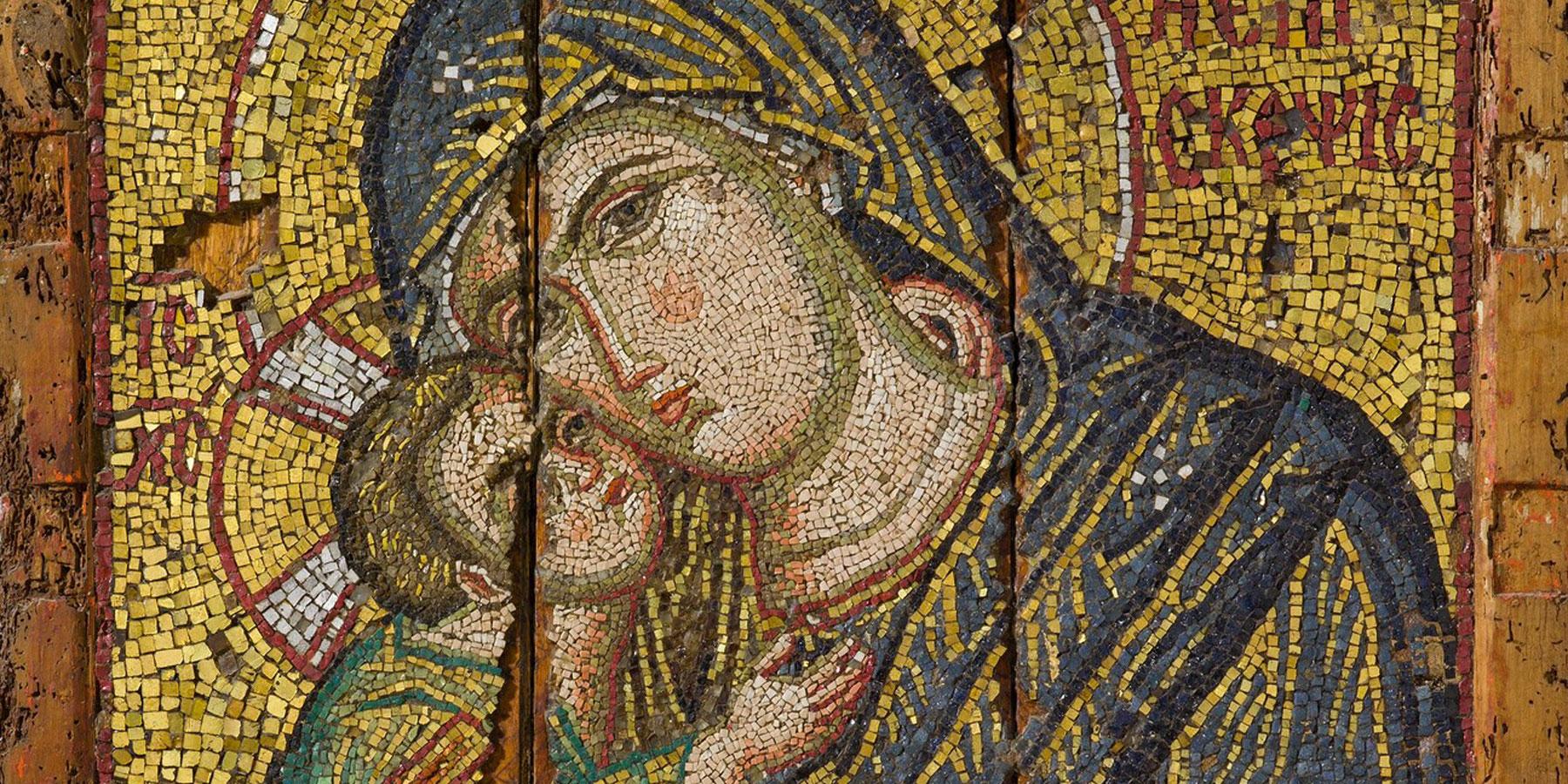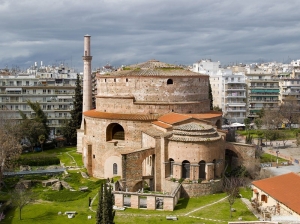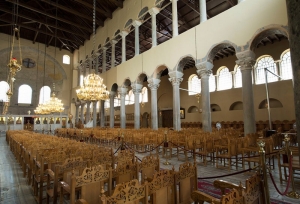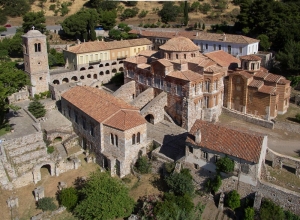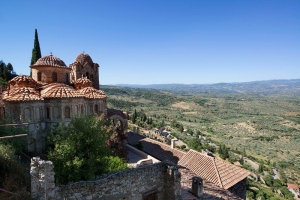The Rotunda of Thessaloniki
The rotunda was built by Emperor Galerius (reigned 305 – 311) or, according to some scholars, Emperor Constantine I (r. 306 –337), perhaps as an imperial mausoleum. Neither of them was buried there, however, and the building was converted into a church, probably in the late fourth or fifth century. Surviving mosaics in the dome depict male figures with arms outstretched in prayer.
Although they lack haloes, the figures are widely thought to represent saints, as several of the names and occupations inscribed next to them correspond to those of Christians martyred during periods of Roman persecution. The figures stand before facades that derive from those of Roman imperial palaces and theaters, but which here take on an otherworldly character. The shimmering gold-on-gold architecture, studded with gems, recalls Saint John the Divine’s vision of the Heavenly Jerusalem that would appear when Christ returned in glory at the end of time. According to his book of Revelation, John “saw the holy city, New Jerusalem, coming down out of heaven from God . . . her radiance was like a most rare jewel . . . and the city was pure gold, like glass” (Revelation 21).
